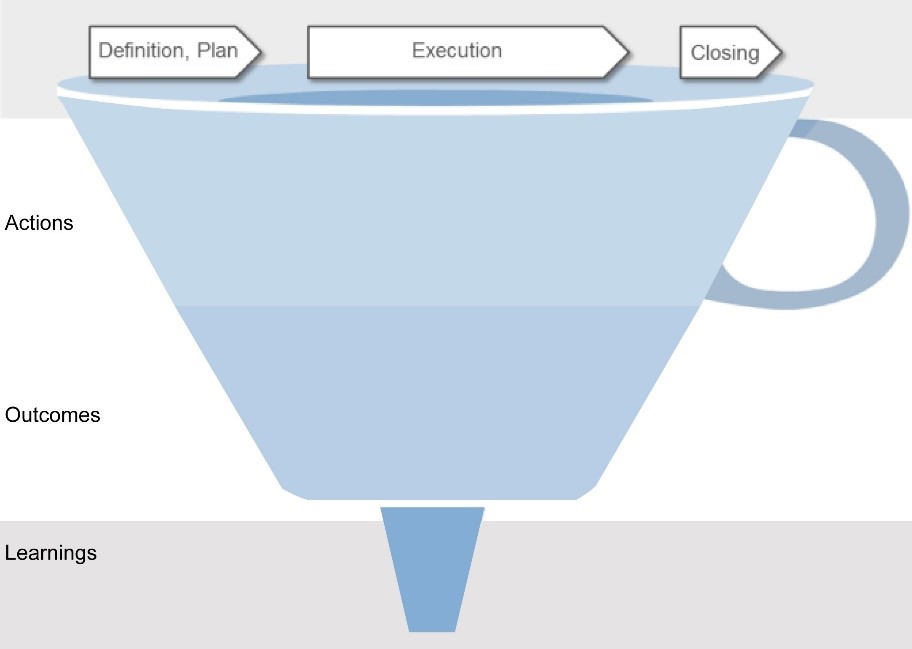Name of Method
Brief description

Type/Level of Method
Challenges
The template helps reflecting on experimentation for analytically identifying issues that should be addressed and strengths of the project
Problem, Purpose and Needs
The method has the purpose of providing a structure for learning from project experiences, by providing discussion categories and a template to collect input (knowledge sharing and documenting).
Relevance to Climate Neutrality
Challenges
Thematic Areas
Impact Goals
Issue Complexity
Issue Polarisation
Enabling Condition
Essential Considerations for Commissioning Authorities
Engagement Journey
Governance Models and Approaches
Enabling Conditions
Democratic Purpose
Spectrum of participation
Communication Channels
Actors and Stakeholder Relationships
A facilitator should write down each of the participants’ contributions on the template. If the meeting takes place in person, the template can be printed poster-size. If the meeting is held online, the template can be used in a collaborative software (such as Miro) and each participant can write down his/her experiences and reflections.
Participant Numbers
Actors and Stakeholders
Participant Recruitment
Interaction between participants
Format
Social Innovation Development Stage
Scope
Time commitment
The preparation phase requires only preparing the template (printed or on a visual facilitation software such as Miro or Mural), while the task needs about 40 minutes. If there are several groups, an additional 30 minutes are needed to exchange experiences between groups.
Resources and Investments
Typical duration
Resources and Investments
In-house
Step by Step
The template is typically utilized to facilitate small groups in extracting learnings from projects.
Large groups should be divided into small group of approximately 5 people to give the change to all participants to contribute to the knowledge exchange.
Each group should be provided the template.
In the meeting is conducted in presence, each group should have a copy of the template printed in A3 size (or bigger) and pens (at least one per participant).
If the meeting is facilitated online, the template should be provided, one per group, in an online whiteboard that allows all participants to add text and icons to the template (i.e., Miro, Mural, Lucidchart, Google Drawing or similar).
Participants should than be instructed that they have 40 minutes to discuss and map their experiences according to the categories provided by the template. They are invited to add text while they speak (not after!) and add connections between concepts with arrows. Participants should be invited to add icons and sketches if they want, since image associated to concepts have been proven to increase recall and reduce cognitive fatigue.
At the end of the meeting, the maps should be saved.
If there is more than one group, a plenary session should be held (allowing about 5 minutes per group) in which each group presents their key learning to the other groups.
Evaluation
An indication of how the template was useful for knowledge sharing is the number of ideas and concepts shared, and the connections between them.
Connecting Methods
Ideally participants will come to the meeting well informed about the project. Any kind of data is useful to support the quality of the knowledge shared for providing evidence (i.e., graphs, dashboards, quotes, photos, reports).
Flexibility and Adaptability
The template is fixed. The meeting facilitation method can be adapted to be conducted in person or online, even a-synchronously (allowing participants to contribute at their preferred time), and with a variable number of participants.
Existing Guidelines and Best Practice
The template has been tested in small groups. To facilitate large groups, participants should be divided into groups of max 5 people, and each group should be provided with the template to fill-in for guiding the knowledge sharing discussion. After 40 minutes, each group should present to the other groups their key findings.
References and Further Resources
Alexander, E., Bresciani, S., & Eppler, M. J. (2015). Understanding the impact of visual representation restrictiveness on experience sharing: An experimental assessment. Journal of Visual Languages & Computing, 31, 30-46.
Lengler, R., & Eppler, M. J. (2007, January). Towards a periodic table of visualization methods for management. In IASTED Proceedings of the Conference on Graphics and Visualization in Engineering (GVE 2007), Clearwater, Florida, USA (Vol. 7, No. 8, p. 31).
https://www.knowledge-communication.org/gallery.html
Comments ()